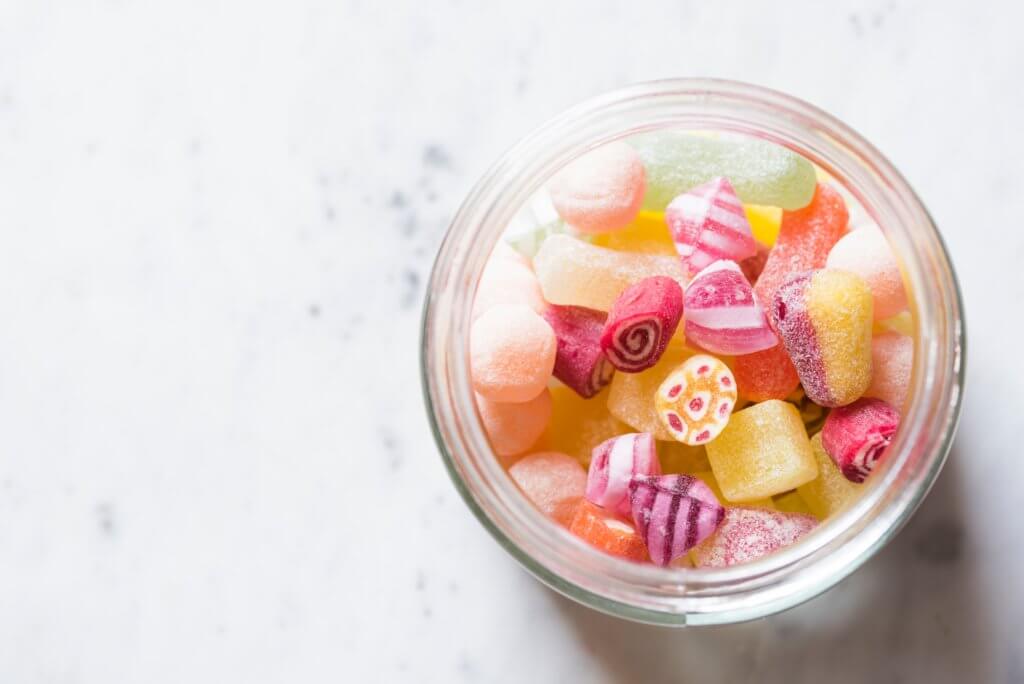By now, you know that oral bacteria feast on sugar, which is why every dentist you’ve ever had (and possibly your mother) has told you about the dangers of eating candy. They tell you, “It’ll rot your teeth!” in a similar tone to “You’ll shoot your eye out!” from A Christmas Story. I can’t sugar coat it — sugar is bad for your teeth no matter what form it comes in. However, there are a few sugary foods that have the worst reputations of the bunch. It’s important to know what they are and why they have earned their status.
Foods that are CHEWY or STICKY are a nightmare for your teeth.
Sticky foods can cause cavities.
The chemistry involved in food being chewy and sticky almost guarantees that it’s packed with sugar, so we are off to a rough start. But the real problem is that sticky and chewy foods stick to your teeth, and even worse they stick between your teeth. This means that even if you are a good brusher, but you don’t floss, you could be up a sticky creek with no paddle. A large percentage of the bacteria living in your mouth live between your teeth, and sticky foods are just the fuel they need to start making cavities.
Sticky foods can pull out fillings and crowns.
As your dentist, I can assure you that I use pretty strong adhesive when I treat you with a filling or a crown. The glue is no Elmer’s paste! But the sticky properties of sugar are so strong that, over time, they can start to break down the effectiveness of the oral adhesive. Patients come into my office all the time after a crown or filling has fallen out. More often than not, it happened while they were eating something sticky. One caramel or toffee may not cause a filling to fall out, but the repetition of eating sticky foods will. It’s an ongoing battle between the adhesive and how often it’s tugged on by sticky foods. At some point, it gives out!
Common sticky foods
I’m guessing at this point you’ve probably started to think about what sticky foods you might be consuming that could cause you problems. A few obvious ones are typical candies like anything that starts with a “gummy” (bears and worms, rings), starbursts, skittles, taffy, caramels, and Swedish fish.
Then to make those foods even more corrosive, many of them have sour versions! Sour Skittles, sour patch kids and lemon drops! A sticky, sugary candy that contains acid to form a sour flavor is almost the worst thing you could eat. Combining sugar and acid and wedging it between your teeth is the quickest way to get cavities.
A few sticky foods you might not have thought about
There are a few common foods that people tend to think are pretty healthy, but can cause just as much trouble as sticky candy if you don’t floss!
- Cough Drops: During cold and flu season, people are sucking on cough drops all day long. There are even chewy ones with a gooey center! These may be helpful for a cough, but consuming them over hours and hours without brushing or flossing is no better than eating candy all day.
- Dried Fruit: It’s just the perfect snack to throw in your bag because it doesn’t need to be refrigerated, it’s fruit, and not something processed, right?! Dried fruit can easily get caught between teeth and cause the same problems as candy when it doesn’t get flossed out.
- Granola Bars/Protein Bars: The most popular Protein bars are incredibly sticky and chewy. Again, a healthy and convenient food option that will get stuck between your teeth.
Ok, realistically you can’t avoid all sticky and chewy foods. I want you to have a life and be able to keep your teeth too.
Here is the plan:
- If you are going to have sticky and chewy candy, eat it with a meal instead of as a mid-day snack. Your mouth produces more saliva during a meal and saliva helps neutralize your mouth’s PH that has been thrown off by the sugar and acid.
- Don’t continuously eat sticky/chewy foods throughout the day (like cough drops). The sustained sugar and acid bath will quickly wear away the enamel on your teeth. Limit your exposure by eating the sticky item in one sitting.
- Rinse with water if you can’t floss after eating sticky foods. The water will help to balance your mouth’s PH and possibly remove some sticky leftovers.
- WAIT TO BRUSH! Don’t ever brush your teeth right after you’ve eaten. When you eat, sugar and acid start to make your enamel soft. If you brush right away, you are brushing your enamel right off. In about 30 minutes, your saliva will have helped your enamel to remineralize, and it’s safe to brush.
- Get travel floss. Next time you are at the drug store, grab an extra container of floss to keep in your bag for sticky emergencies.
If you ever experience a filling falling out or a crown coming off, don’t hesitate to call the office. We know it can be frustrating, but we are here to help. And in case you avoid visits like this for fear of cost, you’ll be happy to know that we provide an affordable alternative to paying out of pocket or pricey dental insurance.
With our PREMIER DENTAL CARE MEMBERSHIP, our members save 20% on dental procedures and get anywhere from 2-4 maintenance cleanings a year. Packages start at $31/month.

